We are a team of creative individuals striving to provide the best digital solutions.
Don't wanna be here? Send us removal request.
Text
Why is Content Marketing Important for B2B
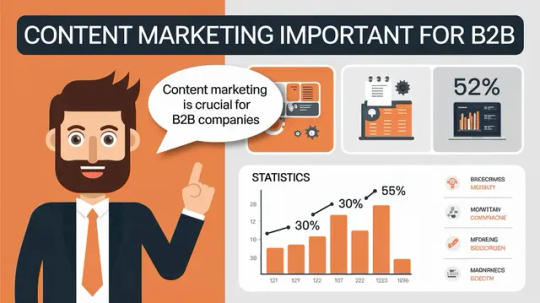
B2B buyers are not unplanned; they research extensively before committing. A well-executed B2B content marketing strategy addresses this by providing solutions to problems at every stage of the buyer’s journey. Whether it’s a whitepaper, blog post or case study, content marketing services offer actionable insights that resonate with decision-makers. Let’s break this down further.
#marketingtips#digital marketing#search engine marketing#social media marketing#marketing#stock market#contentmanagement#content creation#web development#software engineering#artificial intelligence#ecommerce#entrepreneur#software#branding#tumblr stuff#tumblr#artists on tumblr#tumblr milestone
1 note
·
View note
Text
10 Best Conversion Rate Optimization Tools in 2025

In the fast-evolving digital world of 2025, driving traffic to your website is only half the battle. Converting that traffic into loyal customers is where the real challenge and opportunity lies. Conversion Rate Optimization (CRO) tools are the secret weapons businesses use to turn casual visitors into engaged buyers. Whether you’re struggling with high bounce rates, low form submissions or abandoned carts, the right CRO tools can solve these problems while educating you on user behavior and optimization strategies.
#digital marketing#marketingtips#search engine marketing#social media marketing#conversion#marketing#artificial intelligence#ecommerce#business#entrepreneur#branding#software#commercial#artists on tumblr#conversion rate optimization#website development#tools#ai tools#technology
1 note
·
View note
Text
Why Ecommerce Store Needs Custom Software

In the ever-evolving world of ecommerce, having a basic online store isn’t enough. As customer expectations rise and competition grows, businesses must adopt custom software solutions to stay ahead. Off-the-shelf ecommerce platforms may seem convenient, but they often lack the flexibility, scalability, and security that modern online stores require.
Custom software is tailored to the specific needs of your business, ensuring better performance, enhanced user experience, and seamless integration with your operations. Let’s dive deep into why your ecommerce store needs custom software and how it can give you a competitive edge.
#software engineering#custom software development#digital marketing#search engine marketing#business#entrepreneur#ecommerce#software#marketing#branding#artists on tumblr#tumblr stuff#tumblr culture#tumblr milestone
1 note
·
View note
Text
Top 5 UI and UX Trends in 2025

The digital design world is evolving at an unmatched pace and 2025 will be an innovative year for UI & UX. As businesses strive to create seamless and engaging digital experiences UI UX design is at the front of innovation. From AI-driven solutions to emotional user interfaces, the trends shaping UI UX this year are rooted in technology, user psychology and functionality. We’ll explore the top 5 UI & UX trends that will rule 2025, offering insights into how they solve real-world problems and improve user experience jobs while improving user experience for local searches.
Blog: https://codestudio.solutions/news/featured/top-5-ui-and-ux-trends-in-2025
#ui ux design#user experience#ux research#web design#website development#website developer near me#web development#digital marketing#entrepreneur#business#artists on tumblr
0 notes
Text
How to Handle Discontinued Products: SEO Tips and Strategies

When a product is discontinued businesses often face a problem of maintaining information and importance in search engine results without disinformation customers. This challenge becomes even more important when dealing with popular brands like naturally danny SEO products which have built a loyal following. Discontinuing a product does not mean its SEO value disappears it’s an opportunity to turn and optimize strategically. It explores actionable SEO tips and strategies to handle discontinued products effectively leveraging tools like improving video SEO based on analyticsadjusting strategies based on local SEO data and more.
#seo services#social media marketing#digital marketing#smm services#seo#emailmarketing#digital marketing agency#search engine marketing#marketingtips#marketing#ecommerce#artificial intelligence#business#entrepreneur#branding#usafashionstyle#software#artists on tumblr#tumblr culture#tumblr stuff#tumblr milestone#writers on tumblr#cats of tumblr
0 notes
Text
Essential Guide to Building a D2C Website for Enterprise Brands

In today’s fast-paced digital world, D2C (Direct-to-Consumer brands) are transforming businesses to connect with their customers. By cutting out agents D2C brands can offer personalized experiences, build stronger relationships and gain valuable customer insights.
#digital marketing#ecommerce#artificial intelligence#entrepreneur#marketing#branding#artists on tumblr#d2c marketing agency#business#blogspot#blog stuff#art blogs on tumblr
0 notes
Text
SEO Tips for 2025: Analyzing SEO Performance Trends

As we consider 2025, the world of SEO continues to evolve at a quick speed. Staying ahead of the curve requires understanding current trends and analyzing SEO performance trends to estimate future shifts. Whether you are optimizing for ecommerce SEO RankStar, leveraging marketing SEO services Growmatic or improving SaaS SEO Rank the key lies in adapting to emerging technologies and user behaviors. In this article, we will explore actionable SEO tips for 2025 focusing on analyzing SEO performance trends and go into advanced strategies like binary search tree visualization, visual task search process and improving video SEO based on analytics.
1 note
·
View note
Text
What Does the Average Ecommerce Store Generate for Revenue Over Time?
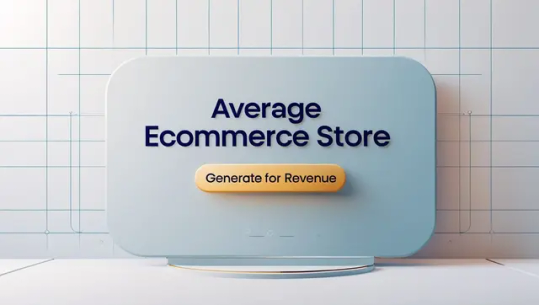
The revenue potential of an ecommerce store depends on various factors such as niche, marketing strategy, customer base, and operational efficiency. Some stores generate thousands of dollars per month, while others struggle to break even. Understanding the revenue trends over time can help entrepreneurs set realistic expectations and scale their businesses effectively.
#ecommerce#smallbusiness#socialmedia#startup#entrepreneur#artists on tumblr#digital marketing agency#artificial intelligence#digital marketing#search engine marketing#marketingtips#website development#ux ui desigTum#tumblr milestone#business
1 note
·
View note
Text
How Does Social Commerce Work

In the modern age, the lines between social media and online shopping are combined. Commerce socials are converting the way businesses connect with customers and motivate sales. It motivates deep into the mechanics of commerce socials explores its benefits and provides effective insights for businesses looking to leverage this growing trend. We’ll also discuss the role of shoppable content the importance of partnering with local e-commerce agencies like WooCommerce and Magento and how platforms like potions e-commerce and e-commerce education platforms are developing the future of online shopping.
#marketingtips#artificial intelligence#digital marketing#ecommerce#business#branding#social media#entrepreneur#artists on tumblr#marketing#commerce#digitaladvertising#customerservice#contentmanagement#socail media#search engine marketing#software#i love tumblr#commercial#tumblr milestone#writers on tumblr#blog#urban environments#microblog#on tumblr#photographers on tumblr
1 note
·
View note
Text
6 Ways to Increase B2B Website Conversion Rates

In competitive digital views having a high-performing B2B website is important for driving conversions and generating quality leads. Unlike best B2B websites target a more niche audience often requiring a tailored approach to engage decision-makers and convert them into loyal customers. Whether you are working with business lead generation companies or managing your strategies optimizing your B2B website for conversions is a must.
#artificial intelligence#artists on tumblr#ecommerce#digital marketing#website developer near me#b2b lead generation#b2bmarketing#business#branding#software#marketing#entrepreneur#b2bsales#entrepreneurship#emailmarketing#businessgrowth#b2b#commercial
1 note
·
View note
Text
Why Mobile App Development is Important




In the digital world mobile app development has become the basis for businesses targeted to stay competitive and relevant. With the increasing reliance on smartphones, enterprises are utilizing enterprise mobile app development to simplify processes improve customer identification program software experiences and drive growth. But why is mobile app development so important and how can businesses like Code Studio Solutions help you achieve your goals? Let’s go deeper into the importance of hiring mobile app developers and how they can transform your business.
Full Blog: https://codestudio.solutions/news/featured/why-mobile-app-development-is-important
#artificial intelligence#digital marketing#business#ecommerce#entrepreneur#branding#software#mobile application development#mobile app developers#mobile app company#mobile app development#mobile app design bd#app developers#ios app development
1 note
·
View note
Text
How to Create Visual Content for Maximum Social Media Impact





In the digital age visual content creation for social media has become a foundation of effective online marketing. With platforms like Instagram, TikTok and Facebook goals for visually engaging posts, businesses and creators must develop the art of crafting compelling visuals. Whether it’s portrait photography exchange, best photography cameras, or live proposal videography mastering visual content creation for social media can greatly improve your online presence. This guide covers creating impactful visual content, tackling challenges and offering solutions. From tool selection to specialties for videography learn how to make your social media stand out.
#digital marketing#artificial intelligence#ecommerce#business#branding#marketing#software#artists on tumblr#entrepreneur#commercial#social media#social networks#tumblr culture#photographers on tumblr#tumblr milestone#writers on tumblr
0 notes
Text
Top 10 Essential Website Optimization Strategies




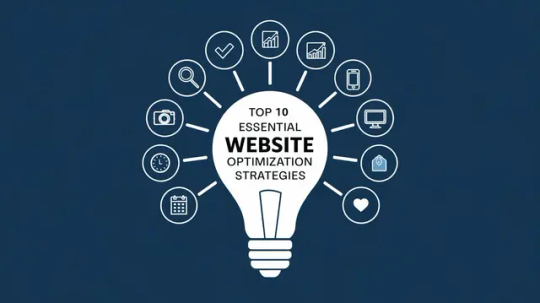
In today's digital age having a well-optimized website is important for attracting visitors improving user experience and improving conversions. Whether you are running an e-commerce platform a blog or a corporate site applying into practice the right optimization strategies can make all the difference. We’ll explore the Top 10 Essential Website Optimization Strategies, focusing on instruments like visual website optimizer and other key techniques such as database optimization, CRO search, and landing page optimization services.
#web development#web design#website#ui ux design#digital marketing#entrepreneur#business#ecommerce#artists on tumblr#marketing#website developer near me#software#branding#it company#commercial#artificial intelligence#website development#uidesign
0 notes
Text
Software Development is Important for Small Businesses

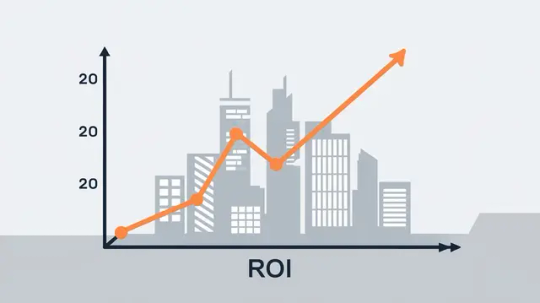


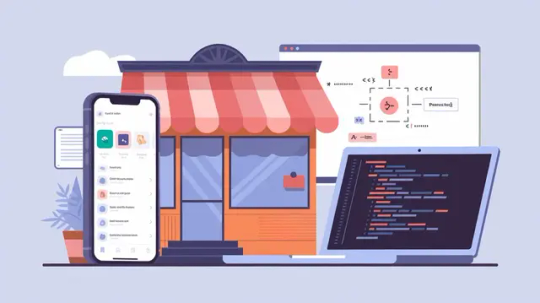
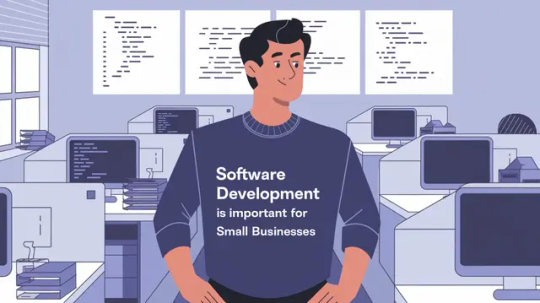

Technology is at the heart of business success in today's fast-paced digital world. Whether you're running a small retail shop, a startup, or a growing service-based company, software development can play a crucial role in streamlining operations and improving customer experience. But why is software development so important for small businesses?
Small businesses often struggle with efficiency, manual processes, and keeping up with market competition. The right software solutions can automate workflows, enhance productivity, and create seamless customer interactions—all while reducing costs in the long run.
This article explores the significance of software development, how it solves common business problems, and why investing in technology is a smart move for small business owners.
#software#software engineering#development#digital marketing#entrepreneur#artificial intelligence#branding#artists on tumblr#tumblr stuff#tumblr milestone#saas technology
0 notes
Text
Top 5 Social Media Marketing Trends in 2025






In the constantly changing world of digital marketing maintaining an advantage of the curve is important for businesses to want success as we look toward 2025 the surroundings of social media marketing. set to go through major changes.
For a business partnering with a social media marketing agency understanding these trends will be key to crafting effective canes marketing strategies and staying competitive. It explores the top social media marketing trends in 2025 focusing on how agencies can leverage them to drive success.
#digital marketing#socia media marketing#marketingstrategy#artificial intelligence#entrepreneur#branding#business#ecommerce#services#seo#marketing#social media#digital marketing agency#seo agency#artists on tumblr#advertising agency#management#company
0 notes
Text
What Are the Most Impactful Brand Storytelling Trends for 2025?

In the ever-evolving world of marketing, brand storytelling remains a powerful tool to connect with audiences on a deeper level. As we approach 2025, brands must adapt to emerging trends to stay relevant and impactful. This blog explores the most influential brand storytelling trends for 2025, answering key questions like what is brand storytelling, how to leverage a brand storytelling agency, and why user-generated storytelling and multi-channel storytelling strategies are essential.
#branding#brandstrategy#digital marketing#business#entrepreneur#ecommerce#startup#artists on tumblr#MarketingStrategy#MarketingTips#social media#growyourbusiness#seo#services#commercial#artificial intelligence
0 notes
Text
AI in Retail: How to Use Machine Learning in Ecommerce

Explore the future of retail with AI and machine learning transforming e-commerce business. AI is quickly becoming an important part of online shopping. It could help e-commerce businesses by automating work which would make them easy to do and earn them more money.
AI has many benefits that help businesses run better and make more money in e-commerce. With AI-powered tools, businesses can use big data from what customers buy and what they offer. This helps them learn what their customers like and how they behave. With this knowledge, companies can enhance their products and services to better align with customer needs.
#artificial intelligence#digital marketing#ecommerce#ai generated#ai artwork#digitalart#machine learning#software#artists on tumblr#tumblr milestone
0 notes